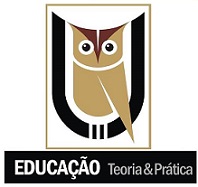The “Toy Day”: reflections from the educator’s perspective
DOI:
https://doi.org/10.18675/1981-8106.v35.n.69.s16821Keywords:
Toy. Playfulness. Teaching practice. Early Childhood Education. Acre.Abstract
“Toy Day” is a moment in the routine of some Early Childhood Education institutions on which children take toys from home to share with the class. The research aimed to analyze this proposal from the perspective of teachers from Rio Branco, Acre. Therefore, an online survey was applied to Early Childhood Education teachers, in order to gather information about the institutional dynamics related to the Toy Day and understand the perceptions of teachers from this proposal. It was concluded that, despite recognizing the benefits of interactions and sharing, there are evident challenges in the process, marked by adult impositions on children, who seek to expand the possibilities of playing with toys at home, but are little heard and considered. The fear of mediating games involving war toys was also evident, as well as the concern to avoid problems with parents, who limit the types of toys shared. Furthermore, reports of a defined pedagogical intention for Toy Day were rare.
References
BARBOSA, M. C. S. Por amor & por força: rotinas na Educação. Campinas, SP: [s.n.], 2000. 283 f. Tese (Doutorado em Educação) – Universidade Estadual de Campinas, Faculdade de Educação. Disponível em: http://repositorio.unicamp.br/jspui/handle/REPOSIP/253489. Acesso em: 12 fev. 2025.
BORBA, A. M. A brincadeira como experiência de cultura. In: O Cotidiano na Educação Infantil. Boletim 23, p. 46-67, 2006.
BRASIL. Currículo de referência único do Acre – Educação Infantil (2018). Disponível em: https://drive.google.com/file/d/10Zjz89yjiAJALDyDTsRUT_ZtUqcvvqUs/view. Acesso em: 12 fev.2025.
BRASIL. Diretrizes curriculares nacionais para a educação infantil. Secretaria de Educação Básica. Brasília: MEC, 2010. Disponível em: http://portal.mec.gov.br/index.php?option=com_docman&view=download&alias=9769-diretrizescurriculares-2012&category_slug=janeiro-2012-pdf&Itemid=30192. Acesso em: 12 fev. 2025.
BRASIL. Instituto Nacional de Estudos e Pesquisas Educacionais Anísio Teixeira. Censo da educação básica 2020: resumo técnico [recurso eletrônico] – Brasília: Inep, 2021. Disponível em: https://download.inep.gov.br/publicacoes/institucionais/estatisticas_e_indicadores/resumo_tecnico_censo_escolar_2020.pdf. Acesso em: 12 fev. 2020.
BRASIL. Lei nº 9.394, de 20 de dezembro de 1996. Estabelece as diretrizes e bases da educação nacional. Diário Oficial da União, Brasília, 23 de dezembro de 1996. Disponível em: http://www.planalto.gov.br/ccivil_03/leis/L9394.htm. Acesso em: 12 fev. 2020.
BROUGÈRE, G. A criança e a cultura lúdica. In: KISHIMOTO, T. M. (org.). O brincar e suas teorias. São Paulo: Cengage Learnig, 2008a, p. 19-32.
BROUGÈRE, G. Brinquedo e companhia. 7. ed. São Paulo, SP: Cortez, 2004.
BROUGÈRE, G. Brinquedo e cultura. 7. ed. São Paulo, SP: Cortez, 2008b.
CERISARA, A. B. Professoras de educação infantil: entre o feminino e o profissional. São Paulo: Cortez, 2008.
CORSARO, W. A. Sociologia da infância. Porto Alegre: Penso, 2011.
FERREIRA, E. M.; SARAT, M. ‘Civilizar a infância’: relações entre adultos e crianças no espaço pedagógico da educação infantil. Poíesis Pedagógica, v. 11, n. 1, p. 86-106, jan./jun. 2013. Disponível em: https://www.revistas.ufg.br/poiesis/article/view/26999. Acesso em: 12 fev. 2025.
INSTITUTO BRASILEIRO DE GEOGRAFIA E ESTATÍSTICA (IBGE).Censo escolar 2020. Disponível em: https://cidades.ibge.gov.br/brasil/ac/rio-branco/pesquisa/13/5908. Acesso em: 12 fev.2025.
KISHIMOTO, T. M. O jogo e a educação infantil. Perspectiva, v. 12, n. 22, p. 105-128, 1994.
Downloads
Published
How to Cite
Issue
Section
License
Authors who publish in this journal agree to the following terms:
a) Authors assign copyright to the journal, with the work simultaneously licensed under the Creative Commons Attribution License that allows sharing of the work with acknowledgment of authorship and publication in this journal.
b) The policy adopted by the Editorial Committee is to assign copyright only after a period of 30 months from the date of publication of the article. After this time, authors interested in publishing the same text in another work must send a letter to the Editorial Committee requesting the release of the assignment of copyright and wait for a response.
c) This journal provides public access to all its content, since this allows greater visibility and reach of published articles and reviews. For more information on this approach, visit the Public Knowledge Project, a project that developed this system to improve the academic and public quality of research, by distributing OJS as well as other software to support the public access publication system to academic sources. The names and email addresses on this website will be used exclusively for the purposes of the journal and will not be available for other purposes. This journal provides open any other party  This work is licensed under a Creative Commons License
This work is licensed under a Creative Commons License










